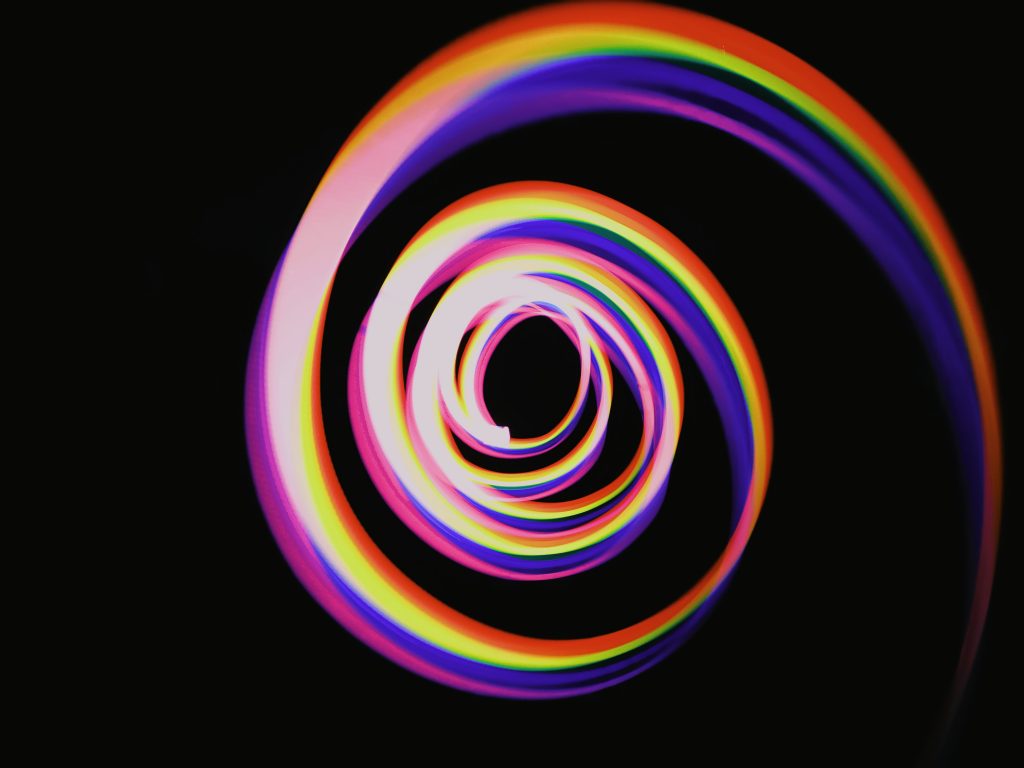- New Storytelling Paradigms – Meander and Explode (Part 1)
- New Storytelling Paradigms – Crots And Fractals (Part 2)
I am a curmudgeonly sort when it comes to change. And I tend not to like trends because they mostly don’t stand the test of time. Social media? A flash in the pan. Okay, so I was wrong about that one – big time. But these so-called “New Hollywood Structures” leave me as cold as a caribou’s nose. After all, the three-act structure has worked well for storytellers for thousands of years.
In order for me to make my point, let’s first examine some of the latest thinking on story structures including those used in video game practices.
Meander, Spiral, Explode
This is taken from a book Meander, Spiral, Explode. Design and Pattern in Narrative by Jane Alison. The contention is that story narrative can be viewed as a moving geometric shape(s) rather than a linear progression of scenes. Quite interesting to envision.
Let’s discuss the merits of these non-traditional narrative designs and how they might be applied to enhance traditional storytelling.
Narrative Strategies, Not Structure
I can’t see that the various categories discussed here can be characterized as structure per se. I see them as story strategies; a way, a pattern, a modus with which to tell a story. I’ll circle back to this point at the end of the article. And yes, I’m using a ‘circular narrative strategy’ for this.
The Wave
Typical narrative structure viewed as a shape is a wave. Given what we already know about Syd Field’s paradigm which was somewhat inspired by German playwright Gustav Freytag and called the Freytag pyramid, that tracks. A wave is like a rounded pyramid; the rise and fall tracing an up and down journey. The build, peak, sustain and release of story tension to lock in the audience.
Wave structure appears in most movies. Sports films follow this traditionally-shaped structure almost religiously. Movies about bands are another example. Rise (peak) to stardom, fall from grace, and perhaps redemption and insight at the end. I Used To Be Famous does this.
Endless variations have come from the wave-shaped story overlayed on a three-act structure, but even more radical derivations are becoming much more prevalent.
Why is this important?
Because we’re beginning to see more and more non-traditional forms of narrative especially among long form story TV series, so understanding the process of how to veer away from that ubiquitous three-act structure is imperative.
Meander
Meander is what it says. Imagine an ant trail to a finish. You meander to the ending. You twist and turn. Backtrack, change course, but move forward until the end.
Let’s look at some movies which are an example of a meander structure.
I have to say up front I don’t see much point in meandering in story. Why follow a long trail of seemingly disconnected paths? I guess it could be said that eventually you do achieve a goal and getting there can be horrifying or fun, so there’s that.
A French film I saw is an example of meandering. A Single Girl basically follows a young woman, nearly in real time, while she works at a hotel as a maid. There is little to no plot. I found it interesting as art, but not compelling and I will say now that the word “compelling” will be my main point in all this.
Roma is a prime example of meandering. Not a goal-oriented storyline by any stretch but it does tell a story and its meandering narrative scheme is effective.
Same with Lost In Translation which rolls along for a few hours, does have points to make, and accomplishes a very compelling story.
In similar fashion, the Coen’s wonderful Barton Fink seems to have a plot, and, of course stuff happens, but not necessarily in any discernible linear fashion.
Spiral
Spiraling involves starting at a point and moving up toward increasingly bigger circles (intensities) of story. I can see how the latest Academy Awards darling Everything Everywhere All At Once could be characterized as a spiral. It starts innocuously enough as the characters begin their day and prepare for a tax audit which just gets progressively more crazy. It spirals up and around that central event of the audit. Of course, I can also see this film as fitting several other categories which we’ll examine as we go along.

Another spiral might be Before the Devil Knows You’re Dead. The structure is a layer on layer, non-linear examination of a story about a jewelry store robbery committed by two brothers. The spiral is perhaps more horizontal, like the constant lapping waves on a beach where each subsequent thrust of the ocean overlaps the last one but also moves the shoreline inward.
Spirals then, are defined as pieces of story spun around a central core in a range of directions. As mentioned, if you watch Everything Everywhere All At Once the central core is Evelyn Wang (Michelle Yeoh) and her various iterations at a tax audit and using characters established in her family and at that audit.
Perhaps another example would be Scott Pilgrim vs The World in which Pilgrim (Michael Cera) vies against several different antagonists one at a time all connecting him to Ramona Flowers (Mary Elizabeth Winstead).
There’s also he potential for a spiral to be a downward movement. Like A Christmas Carol in which things get increasingly worse.
A film like Memento could be considered a reverse spiral since it unfolds in a backward fashion.
Explode (Radials)
Explode is best visualized as a radial, the secondary definition in the title of this section. A pebble dropped in a pool of water that has outgoing rings of causality. The energy (pebble drop) starts from a central location and radiates larger, but not necessarily more intense moments like a spiral does building up or down. A single action has wide-ranging knock-on effects much further away.
If you think of David Lynch’s Blue Velvet perhaps as an example you can get there. Maybe even Twin Peaks where the discovery of a body is the pebble drop that has ever growing circles of story.
By the way, Lynch was creating non-standard narratives when many were still writing hokey comedies or derivative dramas. Mulholland Drive tells a tale from a dropped pebble of a car accident and explodes (radiates) from there.
I would say the radial structure mostly purports to inform theme.
There is an interesting example used in Alison’s book of Joyce Carol Oates Blackwater. Let me quote from the book directly so I don’t mis-characterize it. “We know she’ll die because this novel, like a Greek tragedy, follows the lines of a known story; also because the narrative keeps driving right up to the point of Kelly’s death but then halts, circling out to tell more about her.”
So it would seem that radials, as defined by Alison, can be say a first act, a second act of radials from that one point of an event (like a death) and then a third act:
Setup > Event > Radial focus around something > Resolution
This is a very comfortable way to envision a structure for a film story or any story.
Network and Cells
A bee hive’s cells. Bubbles. They can be all sizes but they are basically the same shape. That’s called tessellation. Cracked, parched earth, tree bark, etc. This form of narrative shows you no linear path or central core, but rather presents tessellation (cells) and invites (forces) your brain to connect them.
Perhaps the closest we come today is the long form narrative TV series. Episodes are presented with different information and we are allowed to make the connections we make until the very end when the detective reveals what we never saw coming.
The first season of Damages did this masterfully. Pieces, pieces, pieces then connection and more pieces.
Season one of Stranger Things is cells of information which connect and reconnect throughout. Like any good mystery, the whys of Eleven and the demogorgon is teased and only revealed bit by bit as we head for the finale in episode eight. All the characters, like cells in a beehive, are given their due. But even then, something Eleven does is not revealed until season two so we get resolution to all the story tessellation but not entirely.
If you watch season three, it opens with a powered woman named Kali (Linnea Berthelsen) with a group of criminals. This group and their importance isn’t revealed until much later in episode seven, Lost Sister.

